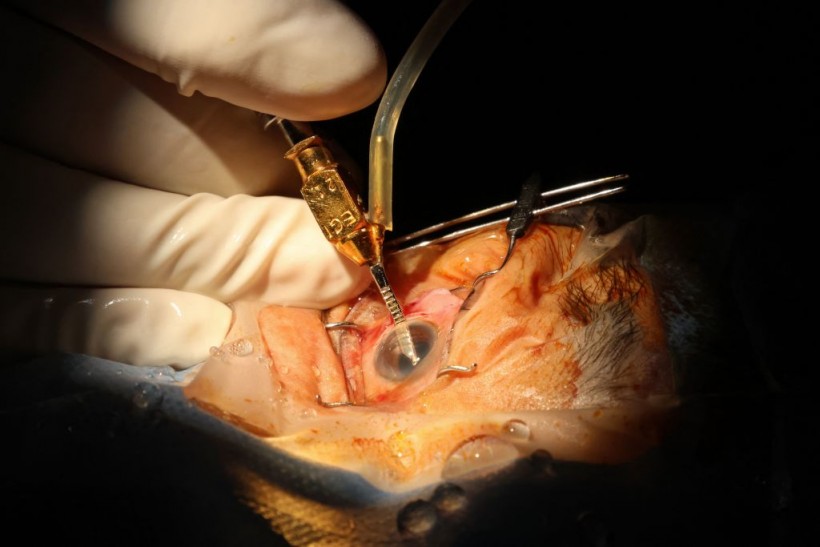Researchers at the University of Rochester have developed computational eye models for post-LASIK surgery patients as some may develop cataract later in life and require new lens. These models assess the performance of standard and depth-of-focus-enhancing intraocular lenses.
The models, using anatomical patient data, aid surgeons in selecting lenses based on expected post-operative optical quality. This three-dimensional approach improves lens selection beyond traditional measurements like corneal length and curvature.

In this photograph taken on March 4, 2023, eye surgeon Sanduk Ruit operates on a cataract patient at an eye surgery outreach in Tapethok.
Machine Learning Aid in the Future of Optical Coherence Tomography
Researchers led by Susana Marcos and collaborators from the Center for Visual Science, Flaum Eye Institute, and Goergen Institute for Data Science at the University of Rochester are conducting a comprehensive study to quantify in 3D eye dimensions using optical coherence tomography.
This tool analyzes eye images in three dimensions, aiming to identify broader trends. Machine-learning algorithms help establish relationships between pre- and post-operation data, offering valuable parameters for optimizing outcomes.
The team has developed technology enabling patients to visualize different lens options, addressing the need for patient engagement in the decision-making process. Marcos emphasizes that the image projected on the retina is not the sole factor; visual processing and perception play crucial roles.
While surgeons find it challenging to convey how patients will see post-surgery, computational, personalized eye models aid in selecting the most suitable lens based on the patient's eye anatomy.
Using an optical bench equipped with technology initially designed for astronomy, such as adaptive optics mirrors and spatial light modulators, researchers manipulate the eye's optics like an intraocular lens.
This approach facilitates fundamental experiments and collaborations with industry partners to test new products. A commercial headset version called SimVis Gekko allows patients to experience the world as if they have undergone the surgery.
In addition to cataract treatment, the researchers apply their techniques to study other significant eye conditions like presbyopia and myopia, expanding the scope of their research.
The team discuss the findings of their study, titled "Computational simulation of the optical performance of an extended depth of focus intraocular lens in post-LASIK eyes," in the Journal of Cataract and Refractive Surgery.
Role of AI in LASIK
Artificial intelligence (AI) has become an integral people's lives, offering convenience, security, and precision beyond entertainment. In healthcare, particularly eye care like LASIK, AI plays a pivotal role as it can "learn" from data, making it valuable in medical imaging analysis.
Ophthalmologists performing laser eye surgery in Los Angeles have found AI to be instrumental in preventing blindness. AI is applied to various eye-related tasks, including optical coherence tomography, visual fields, and fundus photographs, enabling the identification of conditions like diabetic retinopathy, glaucoma, and age-related macular degeneration.
Some examples include British AI companies partnering with hospitals to identify age-related macular degeneration and a Dutch-American specialist creating an autonomous diagnosis system for diabetic retinopathy.
AI is gradually transforming healthcare, particularly in eye care, due to its effectiveness in image analysis. It can detect diseases during routine eye exams, potentially preventing blindness. AI may even facilitate remote imaging in the future, but it has limitations that require complementing with other technologies and manual skills.
In LASIK procedures, experienced surgeons use AI to enhance speed, precision, and effectiveness. AI doesn't replace human medical professionals; instead, it serves as a powerful tool for exams, diagnoses, and treatments.
RELATED ARTICLE: Will Artificial Intelligence Ever Replace Doctors?
Check out more news and information on Eye Health in Science Times.














